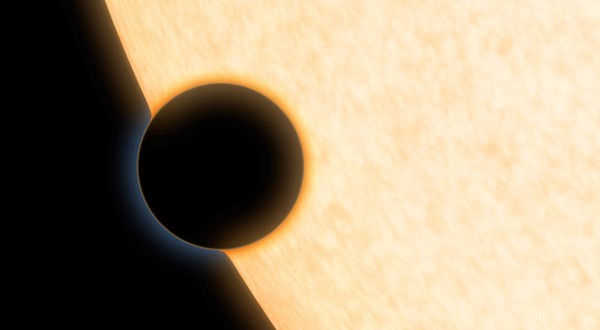Data from three of NASA’s space telescopes, Hubble, Spitzer and Kepler, have discovered clear skies and water vapour on a gaseous exoplanet that is about the size of Neptune, making it the smallest planet from which molecules of any kind have been detected.
The planet orbits a star in the constellation Cygnus, nearly 729 trillion miles from Earth. It is though to have a rocky core wrapped in a thick gaseous envelope, with surface temperatures of more than 600C. US astronomer Professor Drake Deming, from the University of Marlyland who led the research published in Nature journal said:
The water molecule is widespread in the universe. Wherever you have hydrogen and oxygen, it naturally forms. Even some sun spots are cool enough to contain water vapour, although obviously it’s far too hot for life on the sun. Our ideas about the formation of planets have been developed to match our solar system, and we don’t know whether other planetary systems behave the same way.
We want to test the fundamental question of whether small planets are rich in heavy elements, like the oxygen in water vapour.
– US ASTRONOMER PROFESSOR DRAKE DEMING
Water is a pre-requisite for life, which is why finding water on planets holds such interest.
The discovery is a leap forward in the study of distant “exoplanets” that may in future uncover evidence of alien life.
Agencies/Canadajournal
 Canada Journal – News of the World Articles and videos to bring you the biggest Canadian news stories from across the country every day
Canada Journal – News of the World Articles and videos to bring you the biggest Canadian news stories from across the country every day



